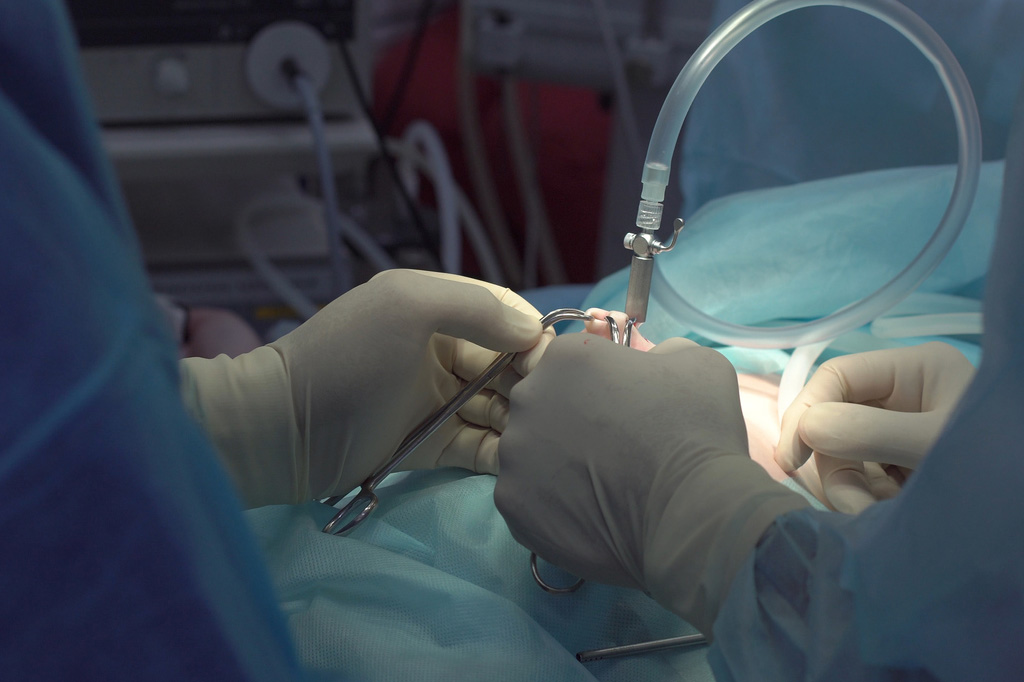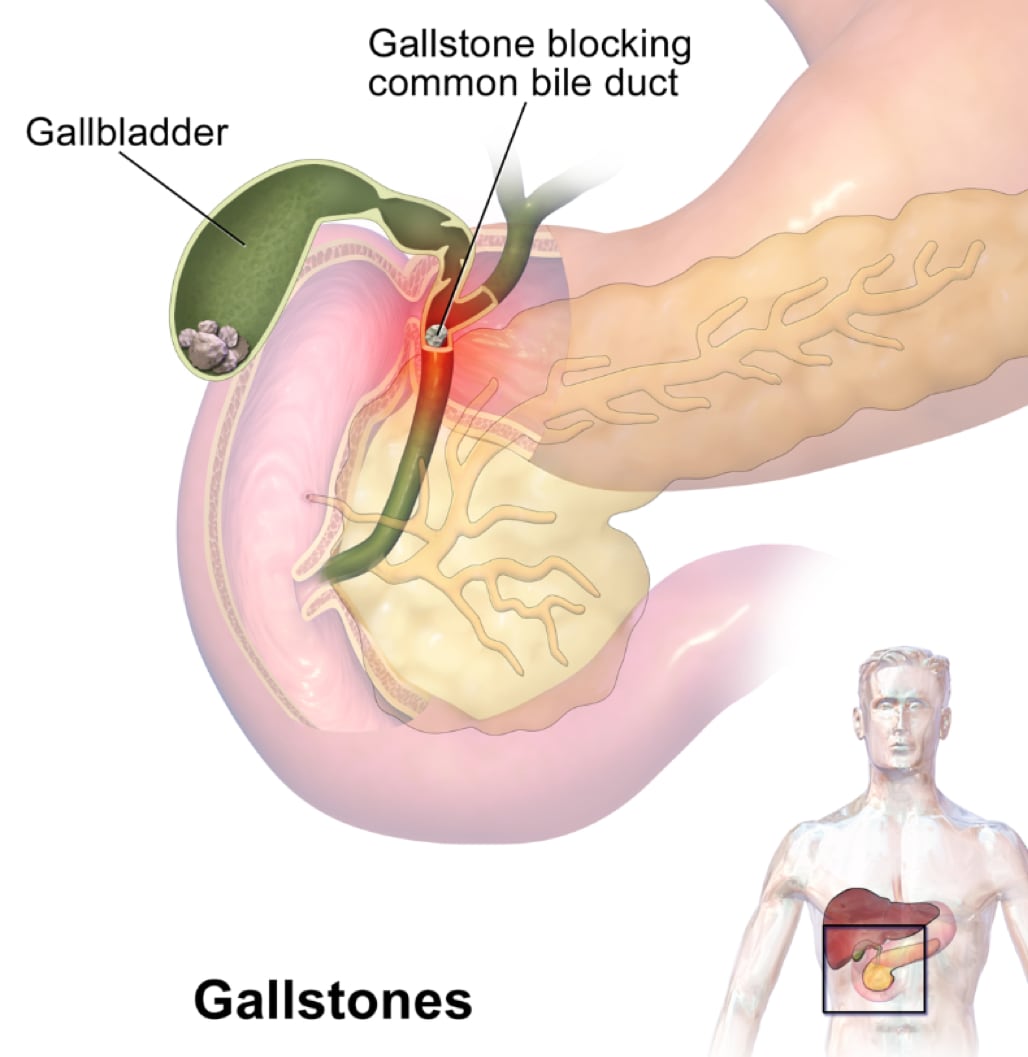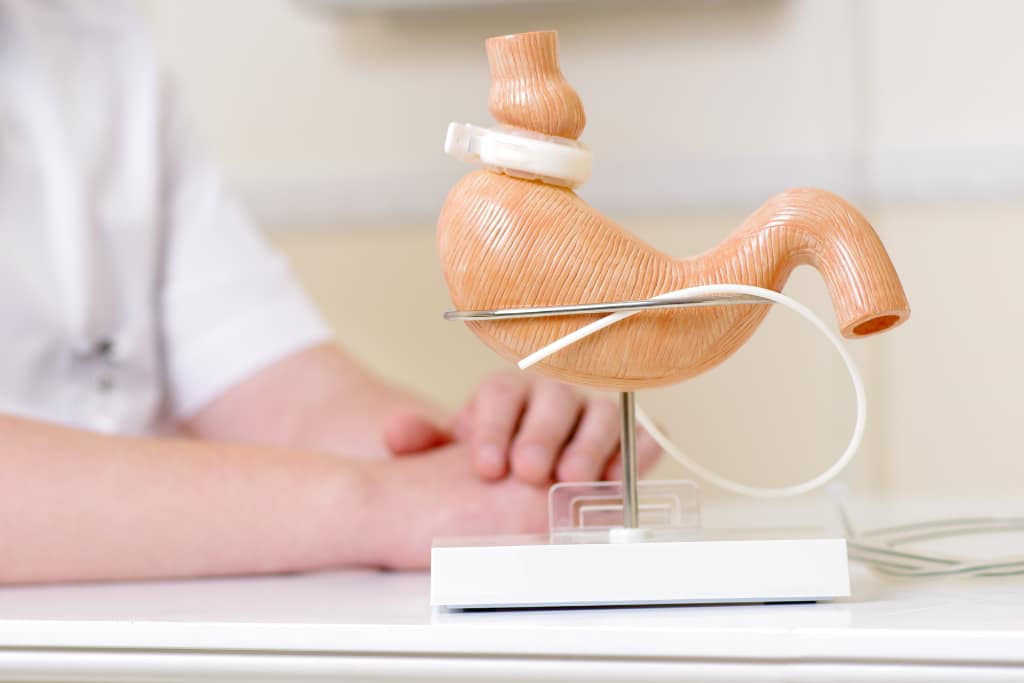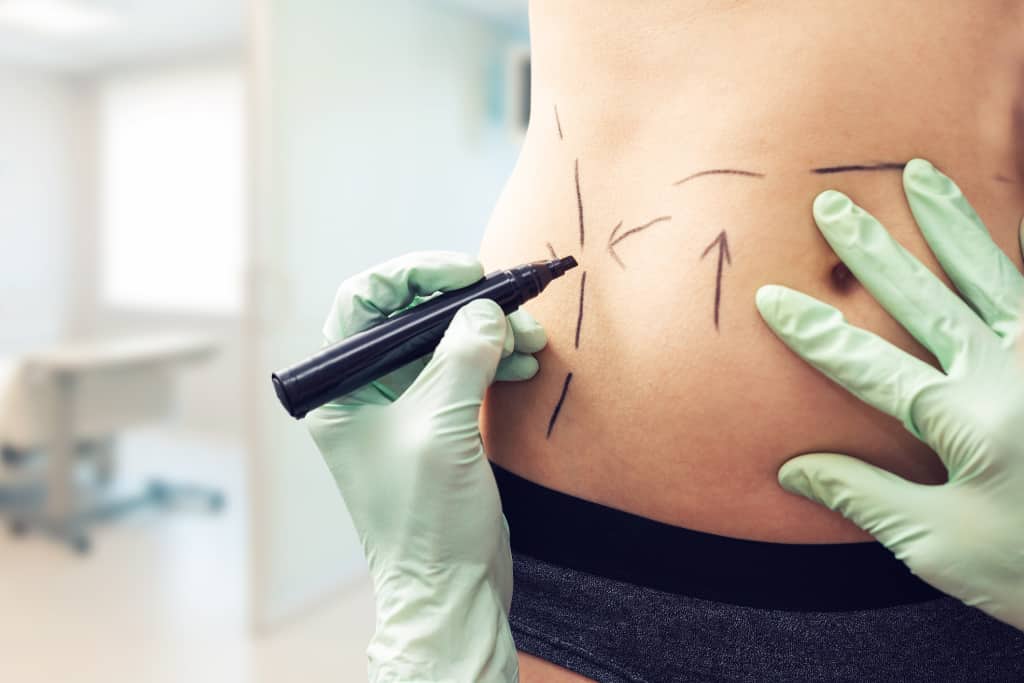Procedures

Laparoscopic Surgery
Laparoscopic surgery is performed by inserting a camera and instrumentation through a set of small incisions
Below is a list of some of the most common general surgery procedures, many of which can be performed laparoscopically. Your surgeon will determine if this is an option for you.
- Diagnosis and treatment of breast cancer, including biopsy, lumpectomy, and mastectomy
- Hernia repair, such as inguinal, incisional, ventral, epigastric and hiatal hernias
- Gallbladder removal
- Advanced colorectal surgery, including diagnosis and treatment of colon cancer
- Hemorrhoidectomy, PPH, and other rectal procedures
- Thyroid surgery
- Appendectomy
- Lipoma, cyst, and skin cancer removals
What is laparoscopic surgery?
Laparoscopic surgery, also known as minimally invasive surgery, is performed by inserting a camera and instrumentation through a set of small incisions, which are normally 1/2 inch or smaller. While the results may vary depending on the type of surgery and the patient’s overall condition, many common advantages include:
- Less post-operative pain
- Potential for shortened hospital stay
- Quicker return to normal activity
- Improved cosmetic results
- In the case of colon surgery, a faster return to a solid food diet and quicker return of bowel functions
All of our surgeons have extensive training and experience in advanced laparoscopic surgery, and are always on the forefront of new technologies, enabling us to offer our patients the safest and most advanced treatment options.
The SILS™ Technique. Dr. Shawn Bench utilize the SILS™ Port for ventral hernia repairs, which allows precise instrumentation through a single, small incision. This can lead to even less post-operative pain and decreased recovery time.
To learn more about the SILS™ Technique, please schedule a consultation or call (858) 565-0104.
Thyroidectomy
Thyroidectomy is the surgical removal of all or part of your thyroid gland.
Thyroidectomy is the surgical removal of all or part of your thyroid gland. Your thyroid is a butterfly-shaped gland located in the front of your neck. It makes hormones that control every part of your metabolism, from your heart rate to how quickly you burn calories.
Health care providers perform thyroidectomy to treat thyroid disorders. These include cancer, noncancerous enlargement of the thyroid (goiter) and overactive thyroid (hyperthyroidism).
How much of your thyroid gland is removed during thyroidectomy depends on the reason for the surgery. If you need only part of your thyroid removed (partial thyroidectomy), your thyroid may work normally after surgery. If you need your entire thyroid removed (total thyroidectomy), you need daily treatment with thyroid hormone to replace your thyroid’s natural function.
Foregut Surgery
Foregut surgery includes conditions of the esophagus, stomach and proximal small intestine.
Types of Foregut Surgeries are:
Hiatal Hernia – A condition in which the upper part of the stomach bulges through an opening in the diaphragm.This is very common (more than 3 million cases per year in the US)
Paraesophageal hernia – A paraesophageal hernia occurs when the lower part of the esophagus, the stomach, or other organs move up into the chest. The hiatus is an opening in the diaphragm (a muscle separating the chest from the abdomen) through which organs pass from the chest into the abdomen.
Nissen fundoplication – A procedure that involves wrapping a part of the stomach around the lower part of the esophagus to treat certain gastrointestinal conditions.
Anorectal Surgery
Anorectal surgery is a surgical procedure to treat anal and rectal conditions and cancer.
Types of Anorectal Surgeries:
Hemorrhoidectomy – Hemorrhoids occur when veins in your rectum and around the anus become enlarged. Our providers recommend different procedures to remove hemorrhoids, depending on their severity and location. If you have extensive hemorrhoids or the blood vessels are severely dilated, we may perform a hemorrhoidectomy or surgery to remove the hemorrhoids.
Anal fissure surgery – An anal fissure, which is a tear in the anal lining, causes sphincter spasms and pain. Some anal fissures heal on their own, but a sphincterotomy, or surgery to relax the sphincter, is the most effective option when you have a chronic fissure.
Abscess surgery – An abscess develops when a gland in the rectum or anus becomes blocked and infected. Surgery to treat an abscess involves making an incision and allowing the abscess to drain.
Colon Resection
A colon resection is a surgery that involves removal of part — or all — of the colon.
This procedure can be performed for various reasons, including a block in the intestine due to scar tissue, colon cancer, diverticular disease, familial polyposis or ulcerative colitis. The colon helps your body in the absorption of minerals and water.
Hernia Repairs
A hernia occurs when an organ, intestine or fatty tissue squeezes through a hole or a weak spot in the surrounding muscle or connective tissue.
Hernias often occur at the abdominal wall. Sometimes a hernia can be visible as an external bulge particularly when straining or bearing down.
The most common types of hernias are:
Inguinal: occurs in the inner groin
Femoral: occurs in the upper thigh/outer groin
Incisional: occurs through an incision or scar in the abdomen
Ventral: occurs in the general abdominal/ventral wall
Umbilical: occurs at the belly button

Cholecystectomy (Gallbradder Removal)
A hernia occurs when an organ, intestine or fatty tissue squeezes through a hole or a weak spot in the surrounding muscle or connective tissue.
A cholecystectomy is a surgical procedure to remove the gallbladder, a small, pear-shaped organ located in the upper right abdomen—the area between the chest and hips—below the liver. The gallbladder collects and stores bile, a digestive fluid produced in the liver.Cholecystectomy may be required where there is pain from gallstones that block the flow of bile.
Symptomatic Gallstones
Cholecystectomy is used to treat symptomatic gallstones; that is, those causing pain and/or inflammation in the gallbladder, bile ducts or pancreas:
- Gallstones in the Gallbladder (Cholelithiasis)
- Gallstones in the Bile Duct (Choledocholithiasis)
- Gallbladder Inflammation (Cholecystitis)
- Pancreas Inflammation (Pancreatitis)
Surgical Approaches
Conservative treatments, such as dietary modifications, usually do not stop gallstones from recurring. Cholecystectomy is the only way to prevent the new formation of gallstones.
Cholecystectomy is a common surgical procedure, carrying only a small risk of complications. Cholecystectomy is most often a minimally invasive surgery (MIS) performed by inserting a tiny video camera (a laparoscope) and special surgical tools through four small incisions so the surgeon can visualize the abdomen and remove the gallbladder. This is called a laparoscopic cholecystectomy.
The benefits of this surgery include less pain, a shorter hospital stay, and a faster return to work and normal activities.
Where the surgery cannot be performed laparoscopically, an operation using a single large incision, called an open cholecystectomy, is used to remove the gallbladder.
Skin Lesions Removal
The removal of a skin lesion can range from a simple biopsy, scraping or shaving of the lesion, to a radical excision that may heal on its own, be closed with sutures (stitches) or require reconstructive techniques involving skin grafts or flaps.
Laser, cautery or liquid nitrogen may also be used to remove benign skin lesions.

Bariatric Surgery
Bariatric surgery is appropriate for patients with a BMI above 40, or a BMI above 35 with significant co-morbidities, such as hypertension, diabetes or sleep apnea.
Dr. George Mueller performs weight loss surgery, including laparoscopic gastric bypass, laparoscopic gastric banding (LapBand) and laparoscopic sleeve gastrectomy. He is the Medical Director of the Bariatric Program at Sharp Memorial Hospital, which is a Bariatric Center of Excellence.
Dr. Mueller offers a comprehensive surgical weight loss program, including pre-and post-operative nutritional counseling and patient support groups, to facilitate our patients achieving and maintaining their weight loss goals for life.
Am I a candidate for bariatric surgery?
Bariatric surgery is appropriate for patients with a BMI above 40, or a BMI above 35 with significant co-morbidities, such as hypertension, diabetes or sleep apnea. However, individual candidacy varies for each patient, and is influenced by current medical conditions, previous medical and surgical history, and psychological evaluation.
Dr. Mueller will determine if bariatric surgery is appropriate for you during your consultation.
Next steps
You must attend the Bariatric Seminar at Sharp Memorial Hospital before scheduling a consultation with Dr. Mueller. Please call Sharp Memorial Hospital to schedule @ (800)-827-4277 and select option 2. Once you have attended the seminar, please contact our office, or request an appointment online for a consultation.
What are the differences between the three procedures?
Laparoscopic Gastric Bypass: Also known as Roux-En-Y gastric bypass, the procedure is a restrictive and malabsorptive surgery, meaning it effects both the amount of food a patient can consume, as well as the body’s process of digestion.
These two components can lead to rapid, significant weight loss that can be maintained for the long term. During the procedure, the stomach is divided in two, and the newly created, small portion of the stomach is connected to the lower part of the small intestine, bypassing the larger stomach.
- Average loss of excess body weight is 70% at 5 years after surgery
- Requires an inpatient hospital stay
- Non-reversible
Laparoscopic gastric banding: Also known as The LapBand, this is a minimally invasive procedure where the surgeon makes a small incision in the abdomen and places an adjustable ring around the stomach to restrict the amount of food that can be consumed. A port placed in the abdomen, just under the skin’s surface, allows the physician to adjust the ring size as a patient’s needs change over time.
- Average loss of excess body weight is 50% at 5 years after surgery
- May be performed as an outpatient surgery
- Malabsorptive complications are rare
- Reversible
Laparoscopic Vertical Sleeve Gastrectomy: This is a restrictive surgery where 85% or more of the stomach is removed, including the portion that produces Ghrelin, a hormone that causes appetite and hunger. There is no malabsorptive component.
- Average loss of excess body weight is 60% at 5 years after surgery
- Requires an over-night hospital stay
- Malabsorptive complications are rare
- Non-reversible
Medically Supervised Diets
Some insurances require a medically supervised diet before authorizing surgery. In some cases, we are able to perform the supervised diet in our office at no charge to the patient. This involves a consultation with our registered dietician and monthly follow-ups. For more information, please call (858) 483-3950.

Plastic, Cosmetic, and Reconstructive Surgery
Cosmetic surgery at San Diego Surgical Specialists is performed by Dr. Larry Pollack.
Dr. Larry Pollack is board certified by the American Board of Plastic Surgery, and performs a variety of plastic, cosmetic, and reconstructive surgeries. Some of the most common procedures include:
- Breast Reconstruction after Mastectomy
- Skin Resurfacing
- Breast Augmentation
- Photo Facials
- Breast Lift
- Fraxel
- Breast Reduction
- Skin cancer, skin lesion, and mole removal
- Tummy Tuck
- Scar Revision
- Liposuction
- Botox
- Brow Lift
- Injectable Fillers: Radiesse, Juvederm, Restylane
- Face Lift
- Laser Hair Removal
- Eyelid Surgery
In addition, Dr. Pollack has a licensed aesthetician at his UTC location who provides skin care and spa services in a pampering environment. She specializes in:
- Microdermabrasion
- Chemical Peels
- Obagi Blue Peels
- Paphos Skin Care
- Sunless Tanning
Paphos Skin Care is an all-natural skin care program developed by Dr. Pollack and his partners at Paphos Skincare. The products were originally formulated in Italy and are now made in the USA, and are paraben and artificial-preservative free. The program includes an in-office facial treatment and complimenting home care products that rejuvenate the skin, reduce blemishes, and fight wrinkles and signs of aging.
To learn more about the services and products offered by Dr. Larry Pollack, please visit his website at www.delmarplasticsurgery.com or contact one of his locations.
Frost Street Location:
San Diego Surgical Specialists
7910 Frost Street, Suite 250
San Diego, CA 92123
Telephone: (858) 565-7588
UTC Location:
Del Mar Plastic Surgery
4510 Executive Center Drive, Suite 201
San Diego, CA 92121
Telephone: (858) 450-9100
